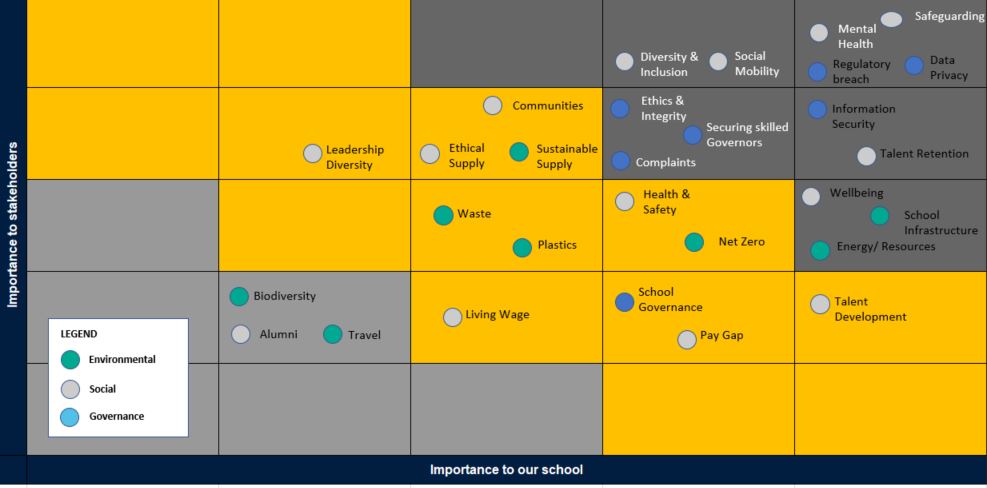
Sustainability for schools

Sustainability as a concept is not new, but in the aftermath of COVID-19 and the impact of the Ukraine conflict on energy security and pricing, it is hard to escape the implications of climate change and diversity & inclusion (D&I) on our everyday lives.
Schools and their associated communities of pupils, parents and teaching staff are no different and many educational organisations feel they need to do something to address their sustainability agenda, but where to start? The challenge is that the subject is very broad.
To quote David Allen
“You can do anything, but not everything”
A very useful tool to help narrow the field of play is called a Materiality Assessment, an example can be seen below. The idea is that you first consider who your key stakeholders are, and then what is most important to them. For an educational institution this will obviously include pupils, parents and staff. But there will also be expectations from the wider local community, regulators and trustees, possibly also alumni.

The school management could start by brainstorming a broad list of sustainability related issues, (broken down into their component Environmental, Social & Governance aspects) and scoring them in terms of their own view of priorities based on the school’s plans and targets. Through a process of engagement and outreach the perspectives of different stakeholders can be captured. Sometimes it is not possible to engage directly, therefore someone within the organisation who is able to represent their views can act as a proxy in the short-term. The outcome of this exercise is typically a three by three grid with high, medium and low priorities for the school and for their stakeholders as a whole.
This simple tool does three things:
- It identifies the most important elements that the school should focus on and make improvements to.
- It identifies the low priority items. It gives permission to do nothing about these, for the time being, to allow resources to be focused on the priority areas.
- It provides a simple but effective mechanism for the school to communicate why it is making the choices it has to its stakeholders.
Sharing this assessment can generate a very valuable debate with stakeholders, and also creates transparency about why things are being done. School leaders should of course not miss the opportunity to involve their pupils in the solution. It is not only the best way to make things happen in practice, but it is also part of the learning opportunities open to pupils. This enables them to get actively involved in solving energy efficiency issues in their school buildings, or bringing to life diversity groups where they feel safe to discuss issues meaningful to them.
In subsequent articles, we will explore how to go about setting your Sustainability Ambition, and the use of Maturity Models to help gauge where you sit as an organisation right now and how to move purposefully towards your ambition. We will also explore the communication and engagement challenges associated with this.
Other insights and news

| Title | Date |
|---|---|
|
Significant cyber incidents
16/12/2025
|
16/12/2025 |
|
From chaos to clarity
11/12/2025
|
11/12/2025 |
| 09/12/2025 | |
| 19/11/2025 | |
| 10/11/2025 |
Contact us
